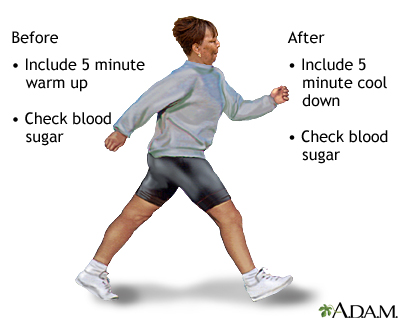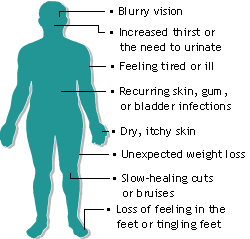Although a "miracle" diabetes diet does not exist to cure the disease, if you have type 2 diabetes, there are dietary rules you can follow that will ensure you stay as healthy as possible. When it comes right down to it, proper nutrition is the only “diet” you need to follow. Many people are inexperienced with following a healthy diet, but once you get into the swing of things, eating properly will become part of your lifestyle.
To start off, it’s best to follow the nutrition guidelines in the Food Pyramid, with special attention to carbohydrate intake. Also, diabetics should maintain a regular meal schedule and exercise portion control.
Starches are allowed in a diabetes diet, as long as you control portions and don’t consume too much starchy food. Starches are present in bread, cereal, and starchy vegetables.
Consume five fruits and vegetables on a daily basis. This can easily be accomplished by eating a piece of fruit for a snack several times a day, or by eating vegetables with dinner. Soups, stir-fries, and chili make good hiding places for veggies if you need clever ways to add more good stuff into your meals.
You can still eat sugars and sweets (perhaps surprisingly) with type 2 diabetes, but do so in moderation, which means once or twice a week maximum. One way to eat fewer sweets without neglecting your sweet tooth is to split a dessert in half.
Especially beneficial for diabetics are soluble fibers, so you need to get as many as these into your diet as possible. Luckily, you can find soluble fibers in many foods, including fruits, vegetables, and seeds. Soluble fibers are excellent because they aid in slowing down and reducing the absorption of glucose from the intestines. Legumes (such as cooked kidney beans) have the highest amount of soluble fibers, and also keep blood sugar levels in check. Insoluble fibers, found in bran, whole grains and nuts, are also part of a healthy diet because they work like intestinal scrubbers, by cleaning out the lower gastrointestinal tract.
For many people, contacting a dietician is the best way to put together a good diabetes diet. Everyone is different, so keeping in contact with your physician and nutrition consultant will ensure your diet plan is the optimum one for you. A professional will take into account your lifestyle, medication, weight, other medical issues, and your favorite foods to come up with a plan that will keep you healthy and satisfy your cravings for particular flavors.
A Healthy Weight – and Lifestyle
If you have type 2 diabetes, it’s also very important to maintain a healthy weight ( http://www.healthline.com/adamcontent/diabetes-diet ). With type 2 diabetes, added body fat actually makes it more difficult for your body to produce and use insulin. Trimming down as little as 10 or 20 pounds has the potential to improve your blood sugar significantly.
Smokers are advised to quit as soon as possible, as smoking can aggravate diabetes and make it more difficult to cope with the disease. Because diabetics often experience circulation problems in the legs and feet, smoking is a dangerous habit to continue - it decreases blood flow even more. Smoking also increases LDL cholesterol and raises the risk of heart attack and stroke.
If you keep your blood sugar under control, moderate alcohol consumption is allowed, but avoid drinking on an empty stomach, as this can lead to low blood sugar. To learn how much alcohol you can safely include in your diet, consult your doctor.
Fat and Carbs
You can control the amount of carbs you consume by practicing carbohydrate counting. This involves keeping track of the total number of grams of carbs you need to eat at meals or snacks, depending on your medication and exercise. Usually this method involves the use of a carbohydrate counting book, which you can purchase at a supermarket or bookstore.
Those with type 2 diabetes are at a higher risk for heart problems, so most physicians make a recommendation to limit fat below 30% of your total daily caloric intake – this tends to be done by eating less fat overall and staying away from saturated fat. You should also pay attention to cholesterol levels by eating smaller amounts of meat, and sticking to lean meats, such as poultry and fish.
It will take some time to adjust to your new diabetes diet and healthy lifestyle, especially if you haven’t followed healthy living practices in the past, but the results will be worth the effort. Not only will you be able to better manage your diabetes, but you will also become a much healthier person.








